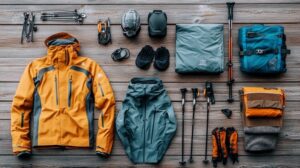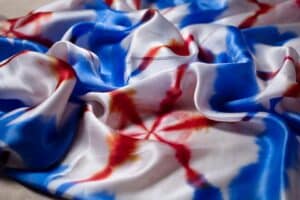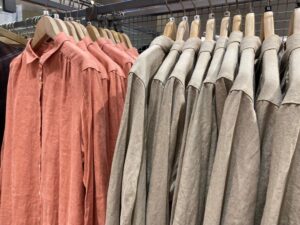
Comparing Softshell and Hardshell Jackets
Explore the pros and cons of each jacket type.
Features | Softshell Jacket | Hardshell Jacket |
|---|---|---|
Material | Made from woven polyester and spandex. | Constructed with waterproof membranes and face fabrics. |
Weather Resistance | Water-resistant, handles light rain. | Fully waterproof, ideal for heavy rain. |
Breathability | Highly breathable for active use. | Limited breathability, traps moisture. |
Durability | Moderate durability for light use. | Highly durable, withstands harsh conditions. |
Comfort | Flexible and comfortable for movement. | Stiffer, prioritizes protection over comfort. |
Weight | Generally heavier and bulkier. | Lighter and more packable. |
Price | More affordable, budget-friendly. | Higher price due to advanced materials. |
Use Cases | Best for mild weather activities. | Essential for extreme weather conditions. |
When it comes to outdoor adventures, choosing the right jacket can make or break your experience. Softshell and hardshell jackets each bring unique benefits to the table. A soft shell jacket offers unmatched comfort and breathability, making it perfect for activities like hiking or climbing. On the other hand, a hard shell jacket is your go-to for ultimate weather protection, especially in harsh conditions like heavy rain or snow.
Softshell jackets are crafted from woven polyester, giving them flexibility and breathability. Meanwhile, hardshell jackets use tightly woven fabrics with waterproof treatments, ensuring they stand up to extreme weather. Whether you're scaling a rock face or braving a winter storm, understanding these differences helps you pick the best outer layer for your needs.
Did you know? Softshell jackets are a favorite for high-fitness activities like trail running, while hardshell jackets shine in severe weather conditions.
Key Takeaways
Softshell jackets are comfy and breathable, great for active sports like hiking.
Hardshell jackets protect better from rain and snow, keeping you dry and warm.
Pick a softshell for nice weather and active use; choose a hardshell for tough weather to stay safe.
Think about cost: softshells cost less, but hardshells are worth it for big adventures.
Having both jackets helps you handle different weather and activities easily.
Overview of Soft Shell Jackets

Material and Design
Softshell jackets are all about comfort and flexibility. They’re made from materials that let you move freely during outdoor activities. Here’s what you’ll typically find in their construction:
Polyester: This lightweight and durable fabric provides wind resistance and wicks away moisture, keeping you comfortable.
Spandex: Adds stretch to the jacket, giving you better mobility when climbing, hiking, or running.
Fleece Linings: These add a layer of warmth without making the jacket bulky, while still allowing your skin to breathe.
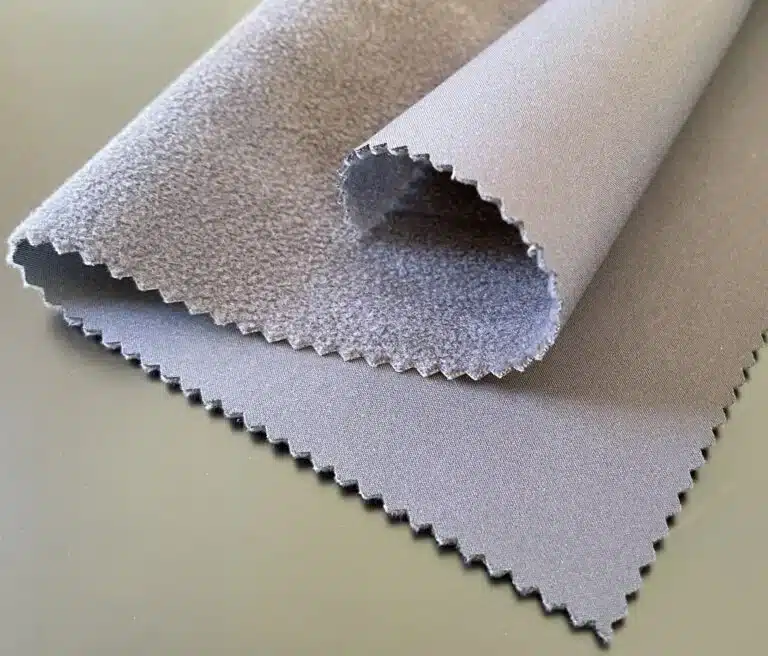
Most softshell jackets feature a hybrid design with three layers: a durable outer layer, a breathable middle layer (often fleece), and a soft inner lining. This combination ensures you stay warm and comfortable without sacrificing mobility and breathability.
Weather Resistance
Softshell jackets are designed for mild weather. They offer water resistance, which means they can handle light rain or snow but won’t keep you dry in a downpour. If you’re heading out on an overcast day or expecting a brief shower, a soft shell jacket is a great choice. However, for heavy rain or extreme conditions, you’ll want to consider a hardshell jacket instead.
These jackets shine in activities like moderate hiking or trail running, where you need protection from the elements but don’t want to overheat. Their ability to block wind also makes them a reliable option for breezy days.
Breathability
Breathability is where softshell jackets truly excel. Unlike hardshells, which can feel stiff and trap heat, softshells allow air to flow through the fabric. This helps regulate your body temperature during high-intensity activities. Whether you’re skiing, climbing, or running, the jacket efficiently releases moisture and heat, keeping you dry and comfortable.
Softshell jackets are the best softshell jackets for high-output activities because they balance protection and ventilation. Their design prioritizes mobility and breathability, making them a favorite for outdoor enthusiasts who need to stay active without feeling restricted.
Tip: If you’re planning a high-energy adventure in cool, dry weather, a softshell jacket is your best bet. It keeps you warm without overheating, even during intense activities.
Durability
When it comes to durability, softshell jackets are designed for moderate wear and tear. They’re not built to withstand the harshest conditions, but they hold up well during everyday outdoor adventures. The materials used, like polyester and spandex, provide a good balance of flexibility and resilience. However, compared to a hard shell jacket, the durability of a soft shell jacket is slightly lower. This makes it better suited for activities where you don’t expect extreme abrasion or rugged terrain.
You’ll find that softshell jackets perform admirably in environments where you need comfort and mobility more than heavy-duty protection. For example, they’re perfect for hiking on well-maintained trails or climbing in controlled conditions. While they might not last as long in rough, rocky environments, they’re still a reliable choice for most outdoor enthusiasts.
Note: If you’re planning an adventure that involves sharp rocks or heavy gear, you might want to consider a more durable option like a hard shell jacket.
Use Cases
Softshell jackets shine in a variety of outdoor activities, especially those that require flexibility and breathability. Their versatility makes them a favorite among outdoor enthusiasts. Here are some activities where softshell jackets truly excel:
Hiking and backpacking on mild days
Trail running in cool weather
Mountain biking on breezy trails
Rock climbing with moderate exposure
Skiing or snowboarding in dry, mild conditions
Peak bagging during summer months
These jackets are ideal for high-intensity activities where you need to stay comfortable without overheating. Whether you’re tackling a steep trail or enjoying a casual bike ride, a softshell jacket keeps you moving freely. Its lightweight design and breathable fabric make it a go-to choice for adventures in mild or slightly damp climates.
If you’re looking for a jacket that adapts to different activities and weather conditions, a softshell is hard to beat. It’s versatile enough to handle everything from a quick hike to a full day of climbing. Plus, it’s stylish enough for casual outings, making it a practical addition to your wardrobe.
Tip: Pair your softshell jacket with a moisture-wicking base layer for added comfort during high-energy activities.
Overview of Hard Shell Jackets
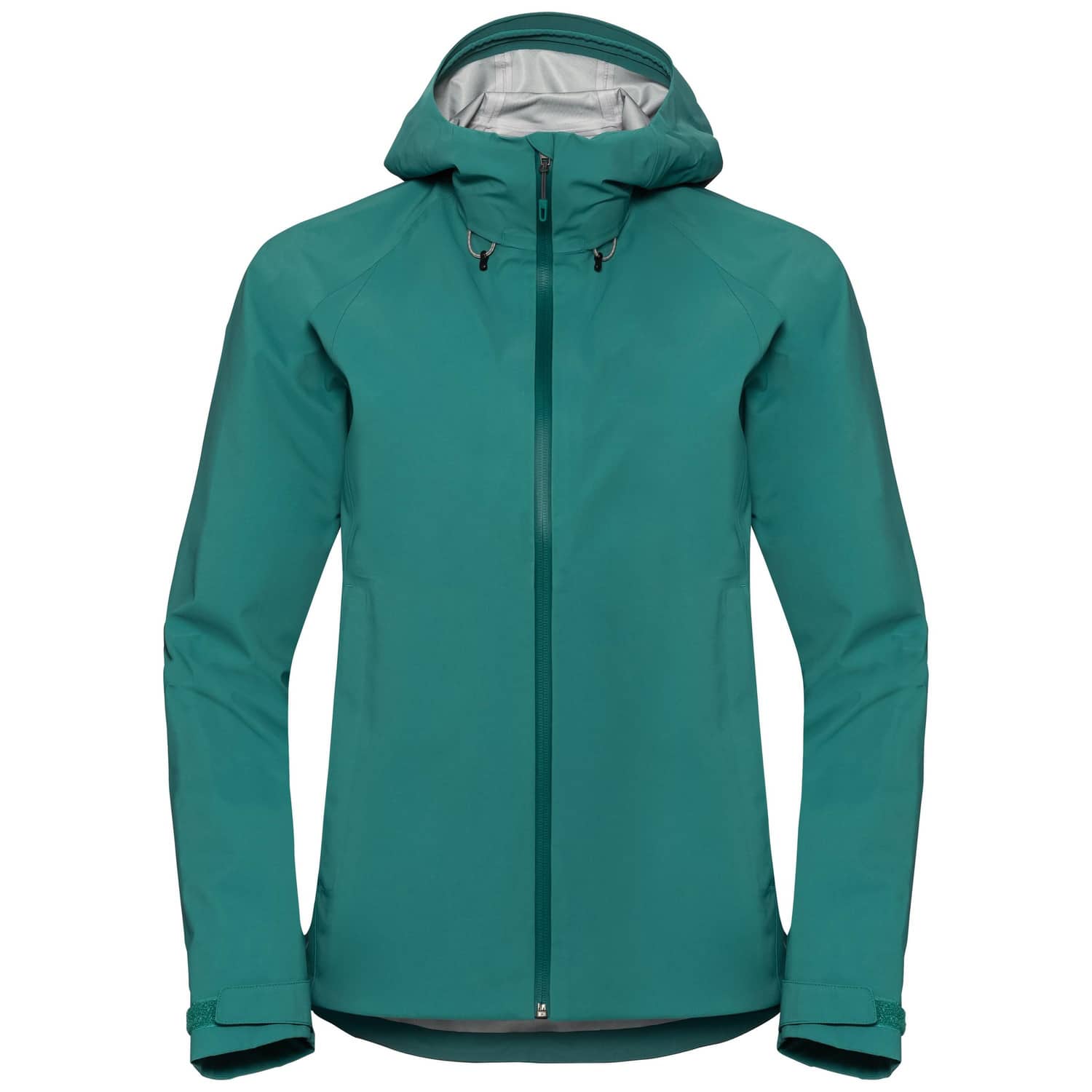
Material and Design
Hardshell jackets are built for serious weather protection. They use advanced materials like hybrid face fabrics with varying denier thicknesses. This design enhances durability in high-stress areas, such as the shoulders and sleeves, while keeping the rest of the jacket lightweight. You’ll also find a durable water repellent (DWR) finish on most hardshell jackets. This coating acts as the first line of defense against rain, ensuring water beads up and rolls off instead of soaking into the fabric. Over time, the DWR finish helps maintain both waterproofing and breathability, making these jackets a reliable choice for wet and windy conditions.
The construction of hardshell jackets is noticeably stiffer compared to softshells. This rigidity provides maximum protection against harsh elements like heavy rain, snow, and strong winds. While they may not feel as flexible, this trade-off ensures you stay dry and shielded in extreme environments.
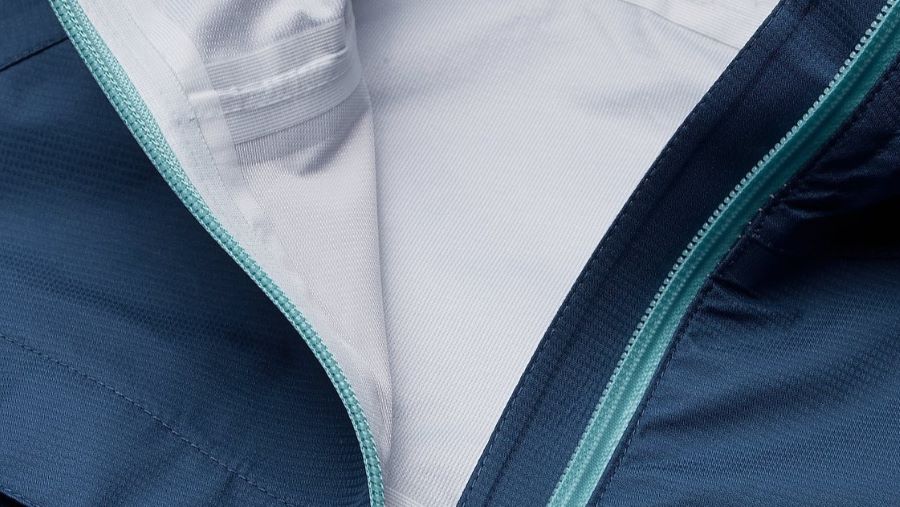
Weather Resistance
When it comes to weather protection, hardshell jackets are in a league of their own. They’re fully waterproof and windproof, thanks to their specialized waterproof membranes. These membranes, often made from materials like Gore-Tex or similar technologies, create an impenetrable barrier against water and wind. Whether you’re caught in a torrential downpour or facing icy gusts on a mountain peak, a hardshell jacket keeps you safe and dry.
These jackets are designed for extreme weather conditions. If you’re planning a winter hike, a ski trip, or a mountaineering expedition, a hardshell jacket is your best bet. Their ability to block out the elements makes them an essential piece of gear for anyone venturing into unpredictable or severe climates.
Tip: To maximize your jacket’s performance, reapply the DWR finish periodically. This keeps the outer layer water-repellent and ensures long-lasting weather protection.
Breathability
Breathability is where hardshell jackets face some challenges. The waterproof membrane that keeps you dry also limits how much moisture can escape. During high-intensity activities, you might notice sweat building up inside the jacket. This happens because the micro-climate inside the jacket becomes warm and humid, reducing the driving force for vapor exchange. If the outside air is also humid, the jacket’s breathability decreases even further, leaving you feeling damp despite staying protected from rain.
However, hardshell jackets still perform well in low-intensity or wet-weather activities. They’re ideal for situations where staying dry is more important than staying cool. For example, if you’re trekking through a rainy forest or waiting out a storm, the waterproof membrane will keep you comfortable and dry.
Note: Over time, the DWR finish can wear off, causing the fabric to saturate and further trap sweat. Regular maintenance ensures your jacket stays breathable and effective.
Durability
Hardshell jackets are built to last. Their construction focuses on withstanding the toughest conditions you might face outdoors. The materials used, like ripstop fabrics and waterproof membranes, give these jackets a durability advantage over other options. You’ll notice how they resist abrasions from rough surfaces, like jagged rocks or icy terrain. This makes them perfect for activities where your gear takes a beating.
The design of hardshell jackets prioritizes ruggedness. They’re made to handle extreme environments, whether you’re climbing a rocky mountain or trekking through dense forests. The reinforced areas, such as shoulders and elbows, add extra protection where wear and tear happen most. If you’re someone who loves pushing boundaries in the wild, you’ll appreciate how these jackets hold up under pressure.
Tip: To extend your jacket’s lifespan, clean it regularly and store it properly. This keeps the materials in top shape for your next adventure.
Use Cases
Hardshell jackets shine in extreme outdoor activities. They’re your best friend when the weather turns harsh. Whether you’re braving alpine conditions or tackling winter activities, these jackets keep you protected. Their waterproof and windproof features make them ideal for environments where staying dry and warm is critical.
Here are some activities where hardshell jackets are essential:
Mountaineering in unpredictable weather
Skiing down snowy slopes
Snowboarding in icy conditions
Hiking in stormy weather
Camping in wet and windy environments
If you’re planning a skiing trip or heading into a snowstorm, a hardshell jacket is a must-have. It shields you from the elements while keeping you comfortable. These jackets are also great for multi-day expeditions where you need reliable protection. Their ability to handle wet, windy, or snowy conditions makes them a go-to choice for serious adventurers.
Note: Pair your hardshell jacket with insulated layers for added warmth during cold-weather activities like skiing or mountaineering.
Side-by-Side Comparison of Softshell and Hardshell Jackets

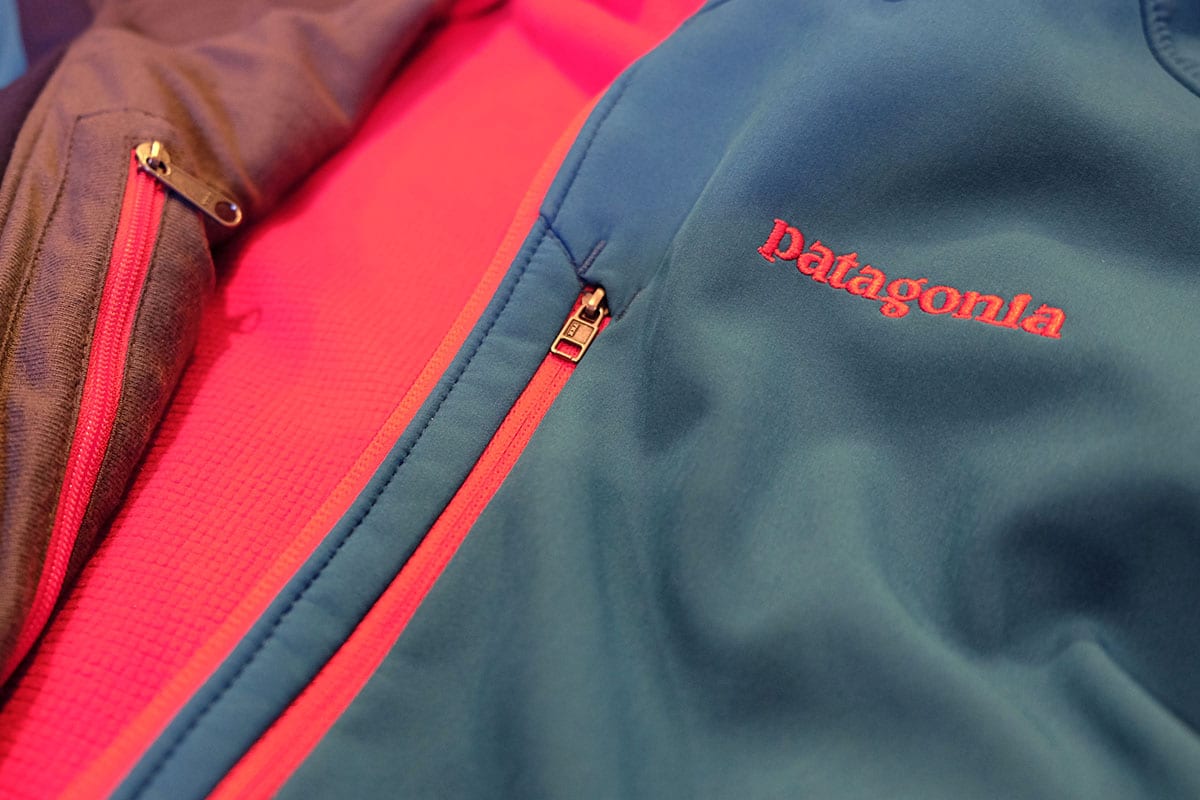
Weather Resistance
When it comes to weather resistance, the difference between softshell and hardshell jackets is significant.
Softshell jackets are water-resistant, meaning they can handle light rain or snow. They’re perfect for moderate weather but won’t keep you dry in heavy rain or prolonged wet conditions. If you’re heading out on a breezy day with a chance of drizzle, a softshell jacket works well.
Hardshell jackets, on the other hand, are fully waterproof and windproof. They’re built with advanced waterproof materials like Gore-Tex®, making them ideal for heavy rain, snow, or stormy weather. Whether you’re hiking in a downpour or skiing through a blizzard, a hardshell jacket ensures you stay dry and protected.
Tip: For extreme weather, always choose a hardshell jacket. It’s designed to handle serious conditions.
Breathability
Breathability is where softshell jackets have a clear edge.
Softshell jackets excel in moisture management, making them ideal for high-intensity activities like trail running or climbing. Their breathable fabrics allow air to flow, keeping you cool and comfortable even when you’re working up a sweat. This breathability advantage makes them a favorite for active outdoor enthusiasts.
Hardshell jackets, while protective, offer moderate breathability. The waterproof layers that keep you dry also limit airflow. During low-intensity activities or wet weather, this isn’t a big issue. However, for high-output adventures, you might feel a bit clammy inside a hardshell jacket.
Note: If you prioritize staying cool and dry during intense activities, a softshell jacket is your best bet.
Durability
Durability is another area where hardshell jackets shine.
Hardshell jackets are built with rugged materials like PU coated or Teflon® PTFE, making them highly durable and abrasion-resistant. They’re perfect for extreme environments, whether you’re skiing, mountaineering, or trekking through rough terrain. Reinforced areas, like shoulders and elbows, add extra protection where it’s needed most.
Softshell jackets, while less durable, still hold up well for lighter use. Made from woven polyester, they’re flexible and resistant to minor wear and tear. With proper care, they can last a long time. However, they’re not designed for harsh conditions or heavy abrasion.
Tip: If you’re tackling rugged terrain or carrying heavy gear, a hardshell jacket is the way to go.
Comfort and Mobility
When it comes to comfort and mobility, softshell jackets have a clear edge. Their stretchy fabrics and soft inner linings make them incredibly comfortable to wear. You’ll notice how they move with your body, giving you the freedom to climb, hike, or run without feeling restricted. This flexibility is a major comfort advantage, especially during high-intensity activities. The breathable materials also prevent overheating, so you stay comfortable even when you’re working hard.
Hardshell jackets, on the other hand, prioritize protection over comfort. Their stiffer construction and waterproof layers can feel less flexible. While they’re great for keeping you dry in extreme weather, you might find them a bit restrictive during activities that require a lot of movement. If you’re planning a low-intensity hike or braving a storm, the trade-off in mobility might not bother you. But for activities like climbing or trail running, a softshell jacket will feel much more natural.
Tip: If comfort and ease of movement are your top priorities, go for a softshell jacket. It’s designed to keep you moving freely.
Weight and Packability
Softshell jackets are known for their lightweight design, but they’re not always the lightest option. The added fleece linings and thicker materials make them slightly bulkier than hardshells. While some lightweight softshells are available, they still take up more space in your backpack compared to a hardshell jacket. This can be a consideration if you’re packing for a multi-day trip or need to save space.
Hardshell jackets, despite their rugged construction, are surprisingly lighter and more packable. Many models, like the Arc’teryx Beta AR, weigh just over a pound and fold down compactly. This makes them a favorite for backpacking and hiking, where every ounce counts. Their compact size also means you can easily stash them in your bag when the weather clears up.
Note: If you’re looking for a jacket that’s easy to pack and carry, a hardshell jacket might be the better choice.
Price
Price is another factor where softshell and hardshell jackets differ significantly. Softshell jackets are generally more affordable, making them a great option if you’re on a budget. Their cost varies based on fabric quality, breathability, and insulation, but they’re usually less expensive than hardshells. This makes them an excellent choice for casual outdoor enthusiasts or those who don’t need extreme weather protection.
Hardshell jackets, however, come with a higher price tag. Advanced waterproof and windproof technologies, like Alpha SV Jacket in Gore-Tex Pro Shell, drive up their cost to us$900, reflecting their premium materials and specialized features. While they’re an investment, they’re worth it if you need reliable protection in harsh conditions.
Tip: If you’re looking for a budget-friendly option, stick with a softshell jacket. For extreme weather, though, a hardshell jacket is worth the splurge.
Manufacturing
When it comes to manufacturing, softshell and hardshell jackets differ significantly in materials and processes. These differences not only affect their performance but also their environmental impact.
Softshell jackets are typically made from woven polyester, sometimes blended with spandex for added stretch. This combination gives them their signature flexibility and breathability. If you’re looking for a jacket that’s easier on the environment, softshells might be the better choice. Their simpler construction generally results in a smaller carbon footprint.
Hardshell jackets, on the other hand, are built for extreme durability and weather resistance. They use advanced materials like polyurethane (PU) or polytetrafluoroethylene (PTFE) membranes, which are bonded to face fabrics. These membranes are what make hardshells waterproof and windproof. While this construction is highly effective, it’s also more resource-intensive. The production of these rigid materials often has a higher environmental impact compared to softshells.
The membrane and face fabric contribute significantly to the overall impact, especially in hardshell jackets. These materials require more energy and resources to produce, which adds to their environmental footprint.
If sustainability is a priority for you, consider how often you’ll use the jacket. A hardshell jacket might last longer due to its rugged construction, but a softshell jacket could be a more eco-friendly option for lighter use. Balancing durability with environmental impact can help you make a more informed choice.
Tip: Look for jackets made from recycled materials or brands that prioritize sustainable manufacturing practices. It’s a small step that makes a big difference!
Choosing the Right Jacket for Your Needs

Activity Level
Your activity level plays a big role in deciding between softshell and hardshell jackets. For high-intensity activities like climbing, running, or trail hiking, softshell jackets are the clear winner. Their breathable fabrics and flexible design keep you comfortable and allow for unrestricted movement.
On the other hand, if your plans involve low-intensity activities or extreme weather, hardshell jackets are the better option. They excel in protecting you from harsh elements like heavy rain or snow. Whether you’re skiing or trekking through rough terrain, a hardshell jacket ensures you stay dry and warm.
Tip: If you’re planning a high-output adventure, prioritize breathability and flexibility with a softshell jacket.
Weather Conditions
Weather conditions often dictate your choice of jacket. Softshell jackets perform best in mild or dry weather. They provide comfort and breathability, making them ideal for moderate climates. If you’re heading out on a breezy day or expecting light rain, a softshell jacket will keep you comfortable without overheating.
For wet, windy, or snowy weather, hardshell jackets are the way to go. Their waterproof and windproof materials shield you from heavy rain, snow, and strong winds. They’re also durable enough to handle rough terrain or dense brush. Whether you’re skiing in heavy snowfall or hiking in stormy conditions, a hardshell jacket offers unmatched protection.
Note: If you’re venturing into unpredictable weather, always opt for a hardshell jacket to stay safe and dry.
Budget Considerations
Budget is another important factor when choosing between softshell and hardshell jackets. Softshell jackets are generally more affordable, offering versatility and comfort at a lower cost. Many options are available for under us$400, making them a great choice if you’re on a budget. Despite their lower price, they still deliver excellent performance for high-output activities.
Hardshell jackets, however, come with a higher price tag. Their advanced waterproof and windproof technologies, like Gore-Tex, drive up the cost. Most hardshell jackets range from us$400 to us$600, with top models reach us$900. While they’re an investment, they’re worth it if you need reliable protection in extreme conditions.
Tip: If you’re looking for a budget-friendly option, stick with softshell jackets. For severe weather, consider investing in a hardshell jacket.
Durability Needs
Occasional use: Soft shell jackets
If you’re planning to use your jacket for casual outings or light outdoor activities, a softshell jacket is a solid choice. These jackets are designed with comfort and movement in mind, making them perfect for hiking on well-maintained trails or enjoying a breezy day outdoors. The materials, like polyester and spandex, provide decent protection against wear and tear during moderate use. However, they aren’t built to handle heavy abrasion or rough conditions.
Softshells work best when you don’t expect to encounter sharp rocks, dense brush, or heavy gear. For occasional use, they’ll hold up well and keep you comfortable. Just remember, if you plan to use your jacket frequently or in demanding environments, a softshell might not last as long as you’d like.
Tip: Stick with a softshell jacket for lighter adventures. It’s a great balance of durability and comfort for everyday outdoor activities.
Rugged environments: Hard shell jackets
When it comes to durability in tough conditions, hardshell jackets take the lead. These jackets are built to withstand abrasions from jagged rocks, icy terrain, and heavy backpacks. Their reinforced materials, like waterproof membranes and rugged face fabrics, make them ideal for demanding environments. Whether you’re mountaineering, skiing, or trekking through dense forests, a hardshell jacket can handle the challenge.
Frequent use in rugged conditions demands a jacket that won’t wear out quickly. Hardshells are designed for exactly that. They’re tough, reliable, and built to last, even when exposed to harsh elements. If you’re an adventurer who loves pushing boundaries, a hardshell jacket with Long-lasting performance in extreme environments is your best bet.
Note: For frequent use in rugged terrain, invest in a hardshell jacket. It’s a durable companion for your toughest adventures.
Softshell and hardshell jackets each have their strengths, and your choice depends on your needs. Softshell jackets are perfect for activities like trail running or skiing, where breathability and flexibility matter most. They’re also great for layering under a hardshell during colder weather or for casual urban outings.
Hardshell jackets, on the other hand, are your go-to for extreme weather. Whether you’re hiking in heavy rain or skiing through a snowstorm, their waterproof and windproof features keep you protected.
Tip: For a versatile outdoor wardrobe, consider owning both types. Use a softshell for mild weather and high-intensity activities, and rely on a hardshell for harsh conditions.
Both jackets are valuable investments for outdoor enthusiasts. Choose based on your activity level, expected weather, and budget, and you’ll always be prepared for your next adventure.
FAQ
What is the main difference between softshell and hardshell jackets?
Softshell jackets focus on comfort and breathability, while hardshell jackets prioritize weather protection. Softshells are great for mild conditions and active use. Hardshells excel in extreme weather, offering waterproof and windproof features. Your choice depends on your activity and the weather you expect.
Can you wear a softshell jacket in the rain?
Softshell jackets can handle light rain or drizzle, but they’re not fully waterproof. If you expect heavy rain or prolonged wet conditions, a hardshell jacket is the better option. It keeps you completely dry and shields you from the elements.
Are hardshell jackets suitable for everyday use?
Hardshell jackets work well for harsh weather but might feel too stiff for casual wear. If you need a jacket for daily activities or mild weather, a softshell jacket offers more comfort and flexibility. It’s also stylish enough for urban outings.
Which jacket is better for skiing?
For skiing, hardshell jackets are the top choice. They provide excellent waterproofing and windproofing, keeping you warm and dry on snowy slopes. However, if the weather is mild and dry, a softshell jacket can work, especially for cross-country skiing.
How do I choose between a softshell and a hardshell jacket?
Think about your activity and the weather. For high-intensity activities in mild weather, go with a softshell. For extreme weather or rugged environments, pick a hardshell. Also, consider your budget and how often you’ll use the jacket.
Tip: Owning both types gives you the flexibility to handle different activities and weather conditions.


